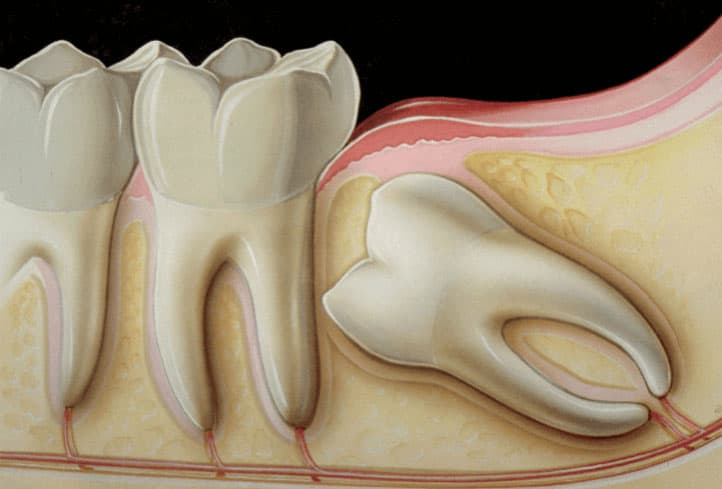
Wisdom tooth removal surgery, also known as wisdom tooth extraction or third molar extraction, is a common dental procedure that involves surgical removal of one or more wisdom teeth, which are the last set of molars located at the back of the mouth. This surgical procedure is typically performed by an oral surgeon. Here’s a detailed explanation of the wisdom tooth removal surgery and its importance:
Procedure:
- Initial Evaluation:
- The process begins with an initial evaluation by an oral surgeon.
- X-rays are taken to assess the position, size, and orientation of the wisdom teeth.
- The dentist or oral surgeon will also evaluate the patient’s oral health, including any existing dental issues.
- Anesthesia:
- Before the surgery, the patient is administered local anesthesia to numb the surgical area.
- In some cases, sedation or general anesthesia may be used to keep the patient relaxed and pain-free during the procedure.
- Incision:
- An incision is made in the gum tissue over the wisdom tooth to access the tooth and its root.
- In some cases, the tooth may be partially or completely covered by gum tissue or bone, requiring additional steps to expose it.
- Tooth Extraction:
- The wisdom tooth is carefully loosened from its socket using dental instruments.
- If the tooth is impacted (unable to fully erupt), it may need to be sectioned into smaller pieces for easier removal.
- Cleaning and Closure:
- After the tooth is extracted, the surgical area is thoroughly cleaned, and any debris or bone fragments are removed.
- The incision is then sutured (stitched) closed with dissolvable or non-dissolvable stitches.
- Recovery and Aftercare:
- The patient is monitored in a recovery area until the effects of anesthesia wear off.
- Detailed post-operative instructions are provided, including guidelines for pain management, oral hygiene, and diet during the healing process.
Importance:
- Prevention of Dental Problems:
- Wisdom teeth often lack sufficient space in the mouth to fully erupt properly. As a result, they may become impacted, partially erupt, or grow at odd angles.
- This can lead to various dental problems, including crowding, misalignment, infection, and pain.
- Pain and Discomfort Relief:
- Impacted or improperly positioned wisdom teeth can cause pain, discomfort, and swelling. Removing them can provide relief from these symptoms.
- Prevention of Infections:
- Impacted wisdom teeth can create pockets of space where food particles and bacteria can become trapped, leading to infection or the development of gum disease (periodontal disease).
- Preservation of Oral Health:
- Wisdom tooth removal helps maintain overall oral health by preventing potential issues that can affect neighboring teeth and gum tissues.
- Orthodontic Treatment:
- For individuals undergoing orthodontic treatment (braces), wisdom tooth removal may be necessary to create space for tooth alignment and to prevent shifting of teeth.
- Risk Reduction:
- Leaving impacted wisdom teeth untreated can increase the risk of complications such as cysts, tumors, and damage to adjacent teeth.